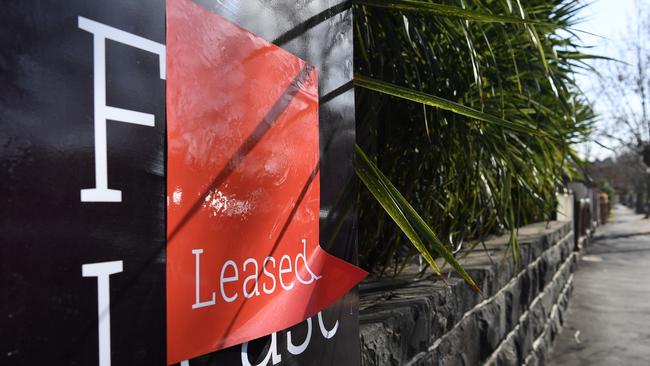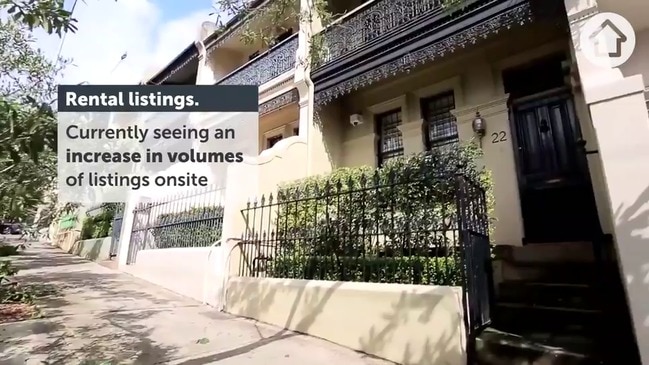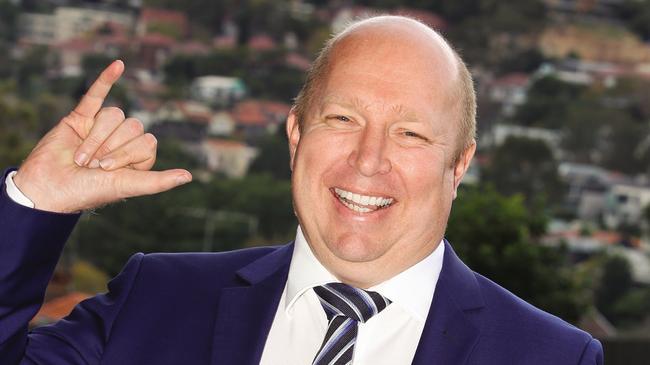Coronavirus: Melbourne’s rental stock increases, homes for sale set to decrease
Rentals are flooding onto the market and Victoria’s healthy flow of sales listings is set to soon diminish as the coronavirus crisis moves into its third month of grappling the nation.

Rentals are flooding onto the market and Victoria’s healthy flow of sales listings is set to soon diminish as the coronavirus crisis moves into its third month of grappling the nation.
Latest realestate.com.au figures show tenants on the hunt for a new home will be spoiled for choice with a 13 per cent increase in rental listings for Victoria in March.
It’s also up 9 per cent from the same time last year.
RELATED: Coronavirus tenant FAQS: What if I can’t pay rent, am being evicted?
Coronavirus eviction ban: Industry calls for details on moratorium
Coronavirus: Some Melbourne landlords suspend, reduce rent

Realestate.com.au chief economist Nerida Conisbee said despite the number of recent major announcements that would affect the real estate industry, details remained sparse.
“What has been immediate is the change in rental listings on realestate.com.au,” she said.
“There are a number of factors contributing to this immediate and significant rise in rental listings.
“As Australia’s borders shut, the demand from international students all but stopped, while short-term stay properties transitioned back into the traditional market seeking long-term tenants.
“Ongoing job uncertainty has also contributed, with many renters moving into share houses or back home with family.”
Tasmania, New South Wales and Queensland recorded the steepest jumps in available rentals for the month, with a combined 72 per cent of extra stock hitting the market in those states.

Ms Conisbee said sale listing numbers were finally recovering after struggling in 2019, but were likely to soon fall.
The amount of properties for sale in Victoria in March was 10 per cent higher than the same time last year.
Victoria and New South Wales were the only states to have more homes for sale than in March 2019, but Ms Conisbee said healthy stock levels would be short lived.
“It’s positive that there aren’t any signs of distressed selling at the moment and with mortgage payment freezes in place for COVID-19 job loss, we don’t expect to see an increase in distressed sales in the short-term,” she said.
“New South Wales and Victoria are still recording higher listings compared to the same time last year when sellers were uncertain following the financial services royal commission and the likely result of the approaching election.
“This trend won’t continue and we expect to see listings fall in the coming months.”

Analysis conducted by SQM research painted a slightly different picture: looking at Melbourne specifically, they found total listings were down by 14 per cent from March 2019.
A 5.7 per cent jump was recorded from February for the city, with total listings hitting just above 36,000.
SQM Research managing director Louis Christopher said there had been a surge in stock sitting on the market for 30 to 60 days.
In February, 2111 homes were on the market for that period, while in March, more than 5000 properties spent more than a month and less than two months listed for sale.
“This may reflect the start of a capital city housing market downturn due to the health and economic impact of COVID-19,” he said.
Melbourne’s average asking price for houses has increased by about 1.7 per cent each month and is up 11 per cent from last year, according to SQM Research.
Mr Christopher said the rise in asking price was due to vendors not adjusting their price expectations yet.
MORE: Irymple California bungalow has ties to pioneers on Mildura fringe
Kew, Toorak penthouses listed with multimillion-dollar price tags
Leigh Harry, Jan Cochrane-Harry: CEOs list St Kilda family home
Originally published as Coronavirus: Melbourne’s rental stock increases, homes for sale set to decrease
